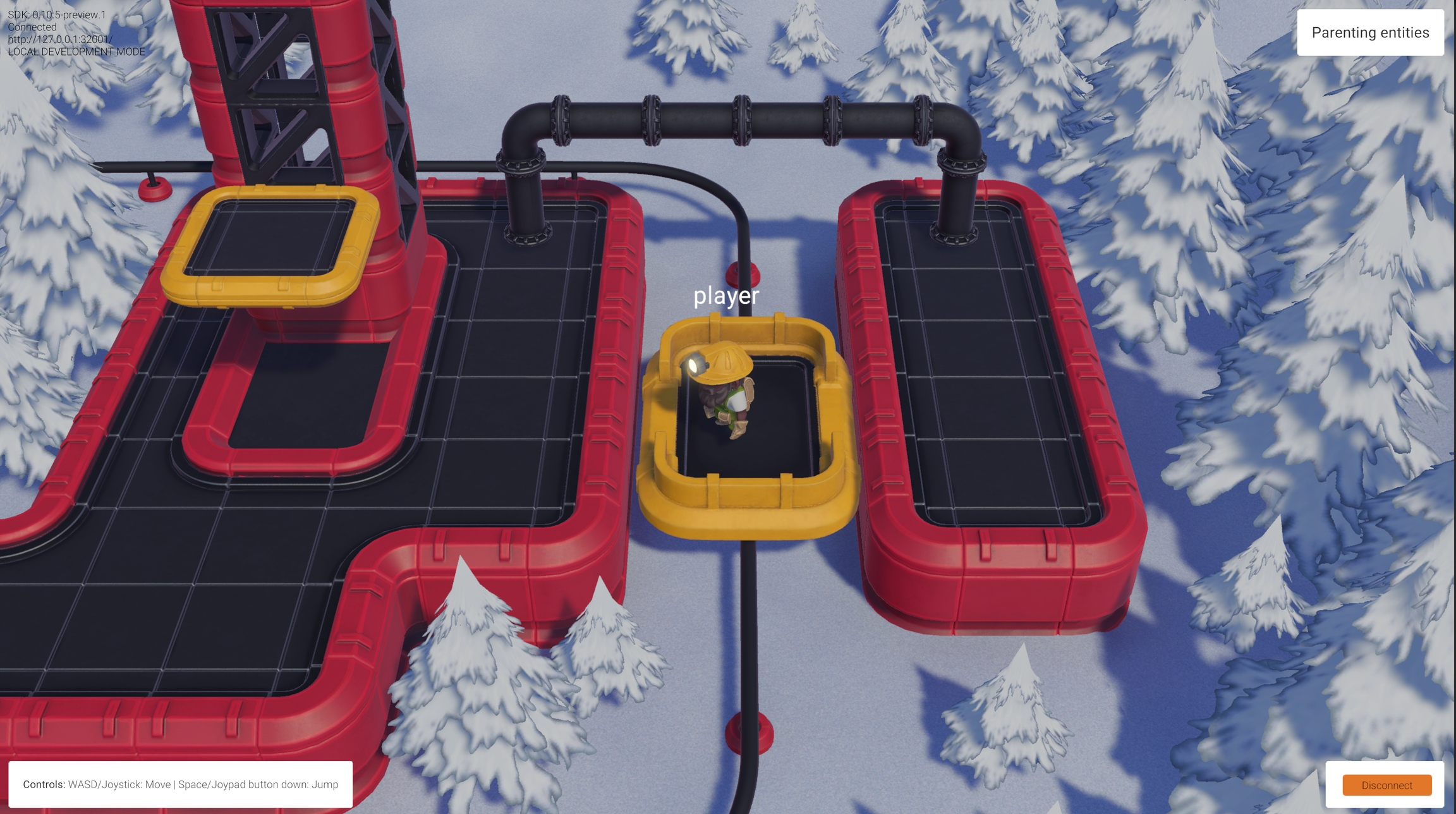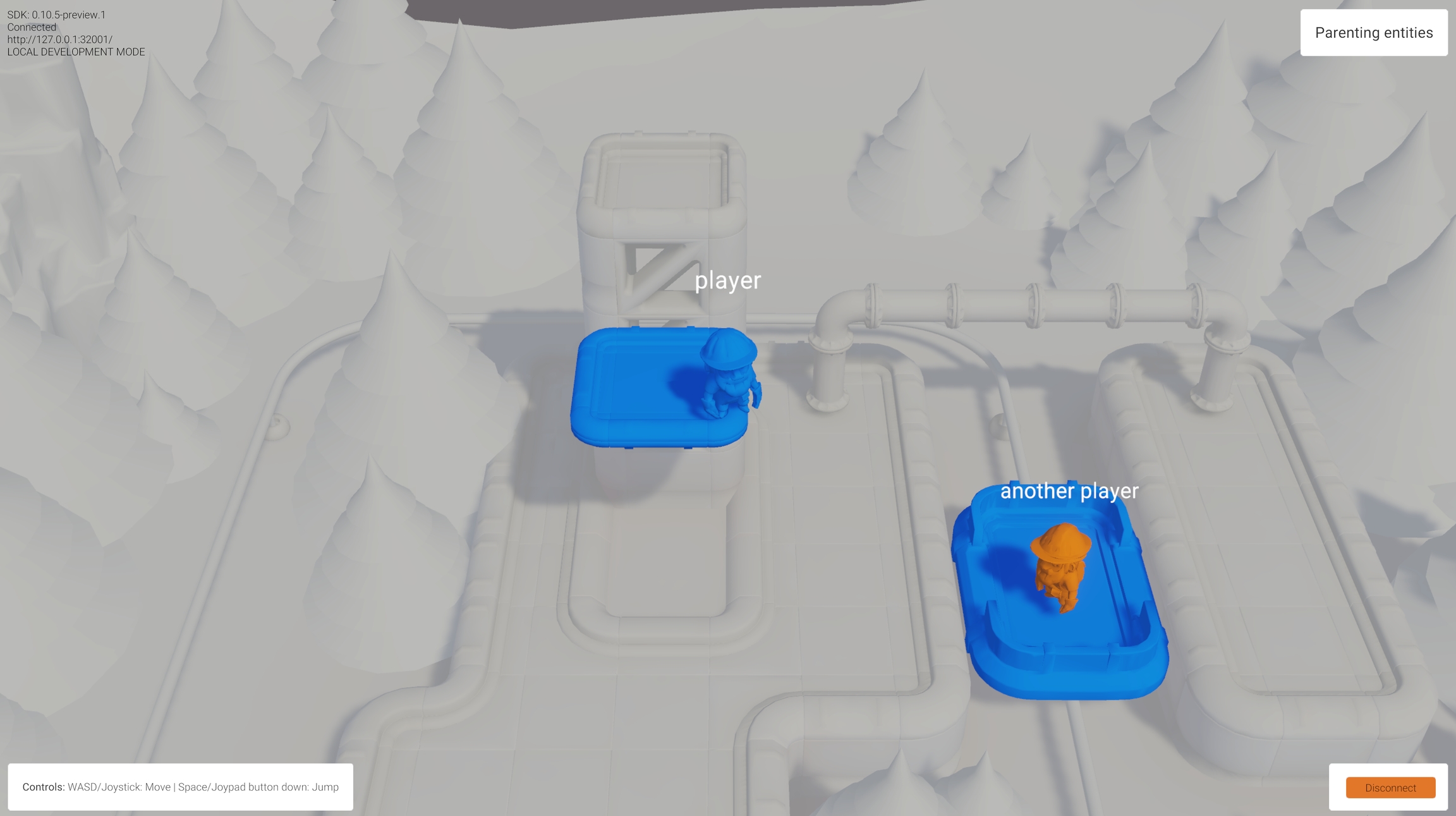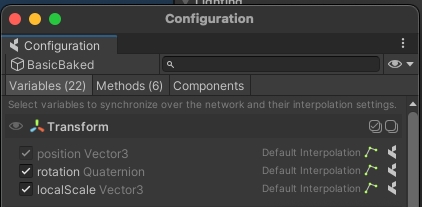4. Parenting entities
Every now and then it makes sense to parent network entities to each other, for instance when creating vehicles or an elevator. In this sample scene we'll see what are the implications of that, and how coherence uses this to optimize network traffic.
Moving platforms | Local positions | Parenting at runtime | Optimization
WASD or Left stick: Move character
Hold Shift or Shoulder button left: Run
Spacebar or Joypad button down: Jump
In this scene
This wintery setting contains 2 moving platforms running along splines. Players can jump on them and they will receive the platform's movement and rotation, while still being able to move relative to the platform itself.

How it's set up
This scene doesn't require anything special in terms of network setup to work.
Direct parenting of network entities in coherence happens exactly like usual, with a simple transform.SetParent(). The player's Move script is set to recognize the moving platforms when it lands on them, and it just parents itself to it.
As for the platforms, they are just moving themselves as kinematic rigid bodies, following the path of their spline (see the FloatingPlatform script). Their position and rotation is synced on the network, and the first Client to connect assumes authority over them.

Effects of parenting entities
Once directly parented, coherence automatically switches to sync the child's position and rotation as local, rather than in world space. This means that when child entities don't move within their parent, no data about them is being sent across the network.
Imagine for instance a situation where 3 players are riding one of the platforms and not moving, only the coordinates of the platform are being synced every frame.
Limitations of simple parenting
You might have noticed we always mentioned "direct" parenting. One limitation of this simple setup is that the parented network entity has to be a first-level child of the parent one. This doesn't exclude that the parent can have other child GameObjects (and other networked entities!), but networked entities have to be a direct child.
A hierarchy could look like this:
Platform
Player
Character graphics
Bones
...
Platform's graphics
...
(In bold is the root of each Prefab, which has a CoherenceSync component)
You can even parent multiple network entities to each other. For example, a networked character holding a networked crate, riding a networked elevator, on a networked spaceship. In that case:
Spaceship
Elevator1
Elevator graphics
Elevator2
Player
Crate
Character graphics
Elevator graphics
Spaceship graphics
...
For cases like these, coherence takes care of them automatically. More complex hierarchies require a different handling, and we cover them in another lesson.
When parenting entities, it is important that the child's position, rotation, and local scale are replicated so that all Clients see the relative state of the child when connected to a parent. If these properties are not replicated on the child, it is possible that different Clients will see different states of the child relative to the parent.

Was this helpful?

